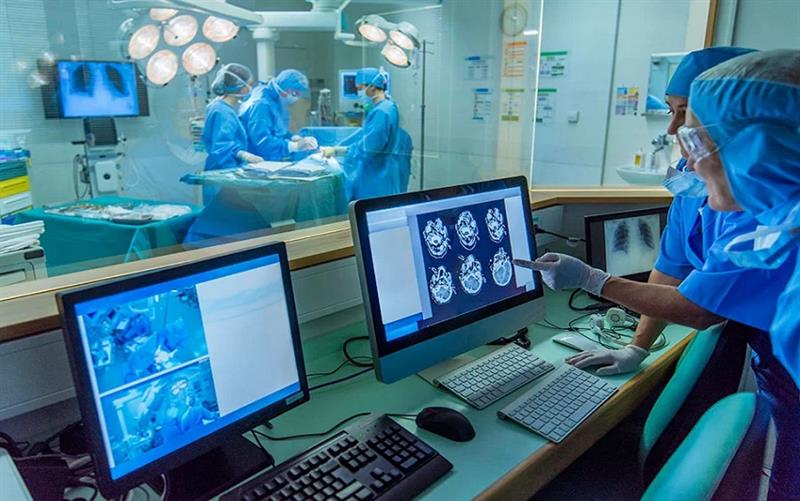
Healthcare software is more than simply a tool in a world where technology is defining the healthcare industry; it is the foundation of a medical practice that is prepared for the future. Healthcare software helps medical practices succeed in the digital era by improving patient care, optimizing workflow, guaranteeing compliance, and fostering teamwork. Practices that make a significant investment in reliable healthcare software will be well-positioned to provide high-quality care and enjoy long-term success as the healthcare industry changes.
Technology has emerged as a critical factor in today's quickly changing healthcare environment, influencing accuracy, efficiency, and patient happiness. In particular, healthcare software is leading this change and serving as the foundation of a medical practice that is prepared for the future. Modern medical offices cannot function without healthcare software, which does anything from expediting administrative tasks to enhancing patient outcomes. This is the reason why:
1. Enhanced Patient Care Through Data-Driven Insights
With the use of healthcare software, medical practitioners may gather, examine, and make use of enormous patient data sets. For example, EHR systems facilitate easy access to a patient's prescription history, allergies, and other health information. Clinicians can make better decisions for their patients thanks to this thorough understanding of the patient's health. Additionally, data analytics can be used to spot patterns and anticipate possible health problems, enabling early intervention and individualized treatment programs.
2. Streamlined Administrative Processes
Administrative duties associated with running a medical business are many and include everything from appointment scheduling to invoicing and insurance processing. These procedures are automated by healthcare software, which lessens the workload for employees and lowers the possibility of mistakes. For example, practice management software can manage patient check-ins and billing, giving medical professionals more time to concentrate on patient care. This effectiveness raises the practice's total output while also improving the patient experience.
3. Improved Patient Engagement and Satisfaction
Modern patients demand ease of use and openness, and healthcare software is essential to raising patient involvement. From the comfort of their homes, patients can conveniently access their health information, connect with their healthcare providers, and schedule appointments thanks to patient portals, telehealth platforms, and mobile health apps. A closer bond between the patient and the clinician is fostered by this degree of accessibility, which increases patient happiness and loyalty.
4. Compliance with Regulatory Requirements
One of the sectors with the highest levels of regulation is healthcare, which has strict rules governing patient privacy and data security. Sensitive patient data is safely saved and communicated thanks to healthcare software, which enables practices to comply with laws like the Health Insurance Portability and Accountability Act (HIPAA). Furthermore, a lot of healthcare software solutions are made to update automatically in order to comply with the most recent regulations, which lowers the chance of non-compliance and the resulting fines.
5. Facilitating Interoperability and Collaboration
Patient data must be able to be shared and accessed across various systems and providers as the healthcare ecosystem grows more linked. One essential component of contemporary healthcare software is interoperability, or the capacity of various healthcare systems to cooperate with one another. Healthcare software lets labs, pharmacies, hospitals, and specialists share information more easily, ensuring that everyone on a patient's care team is aware of the latest developments. Coordinated, high-quality care delivery depends on this partnership.
6. Adaptability to Emerging Technologies
The healthcare sector is always changing as a result of the quick development of new technology and therapies. Healthcare software that is prepared for the future is made to be flexible and integrate with new tools and technologies like wearables, machine learning, and artificial intelligence (AI) with ease. This flexibility guarantees that medical practices can continue to lead the way and provide patients with state-of-the-art care.
7. Scalability for Growing Practices
A medical practice's needs expand along with it. Due to the inherent scalability of healthcare software, expanding practices can easily add more users, features, and functionalities. Healthcare software can be tailored to match the changing demands of the practice, whether it involves the addition of new locations, services, or specializations. Because of its scalability, the program will continue to be a useful tool even as the practice expands.
8. Cost Efficiency and Return on Investment
Healthcare software can have a substantial upfront cost, but overall, the advantages outweigh the drawbacks. Healthcare software can result in significant cost savings by automating processes, lowering errors, and increasing efficiency. Additionally, practices may see a rise in income by improving patient happiness and loyalty. Better patient outcomes, increased operational efficiency, and practice expansion that is sustained demonstrate the ROI for healthcare software.
9. Optimized Resource Management
The effective distribution and administration of resources within a medical practice is facilitated by healthcare software. Software solutions help practices maximize their resource utilization, cutting waste and guaranteeing that both human and material resources are used properly. These solutions range from staff scheduling to inventory management. Lower operating expenses and a more efficient workflow result from this.
10. Enhanced Decision Support Systems
Decision support systems are a common feature of contemporary healthcare software, helping physicians make more precise diagnosis and treatment decisions. These systems have the ability to evaluate patient data, compare it to extensive medical databases, and offer recommendations based on solid research. This degree of assistance lowers diagnostic mistakes and raises the standard of care generally.